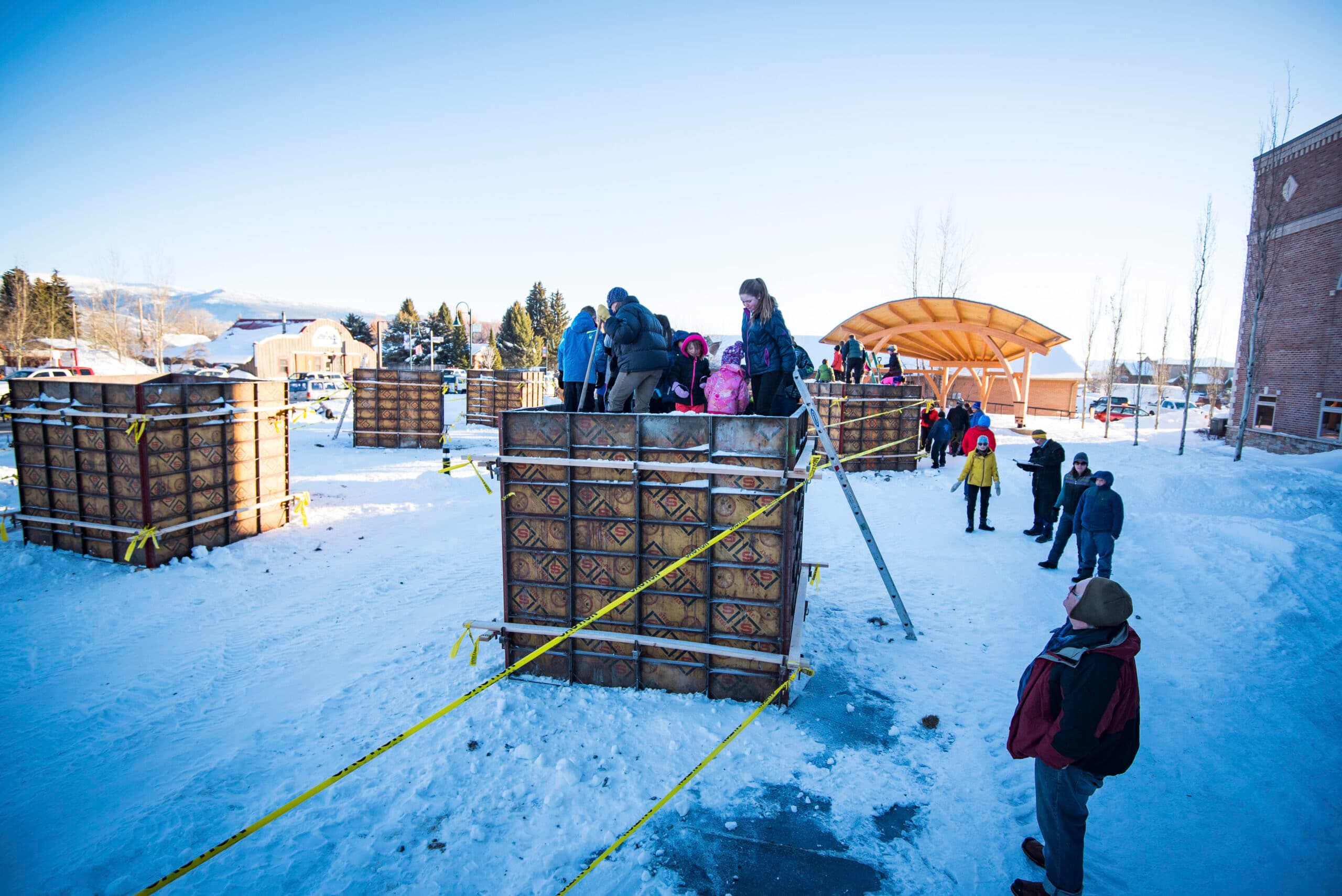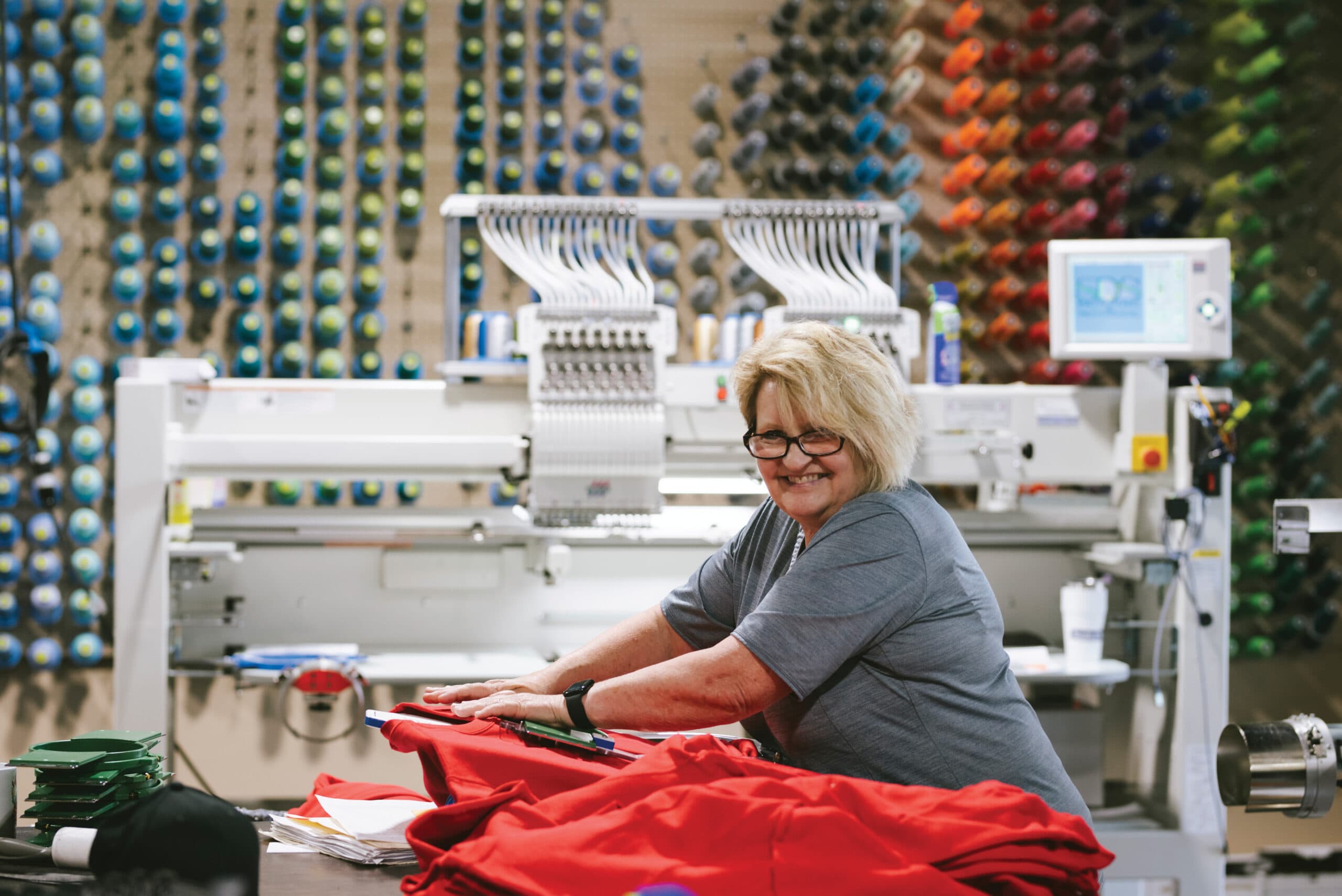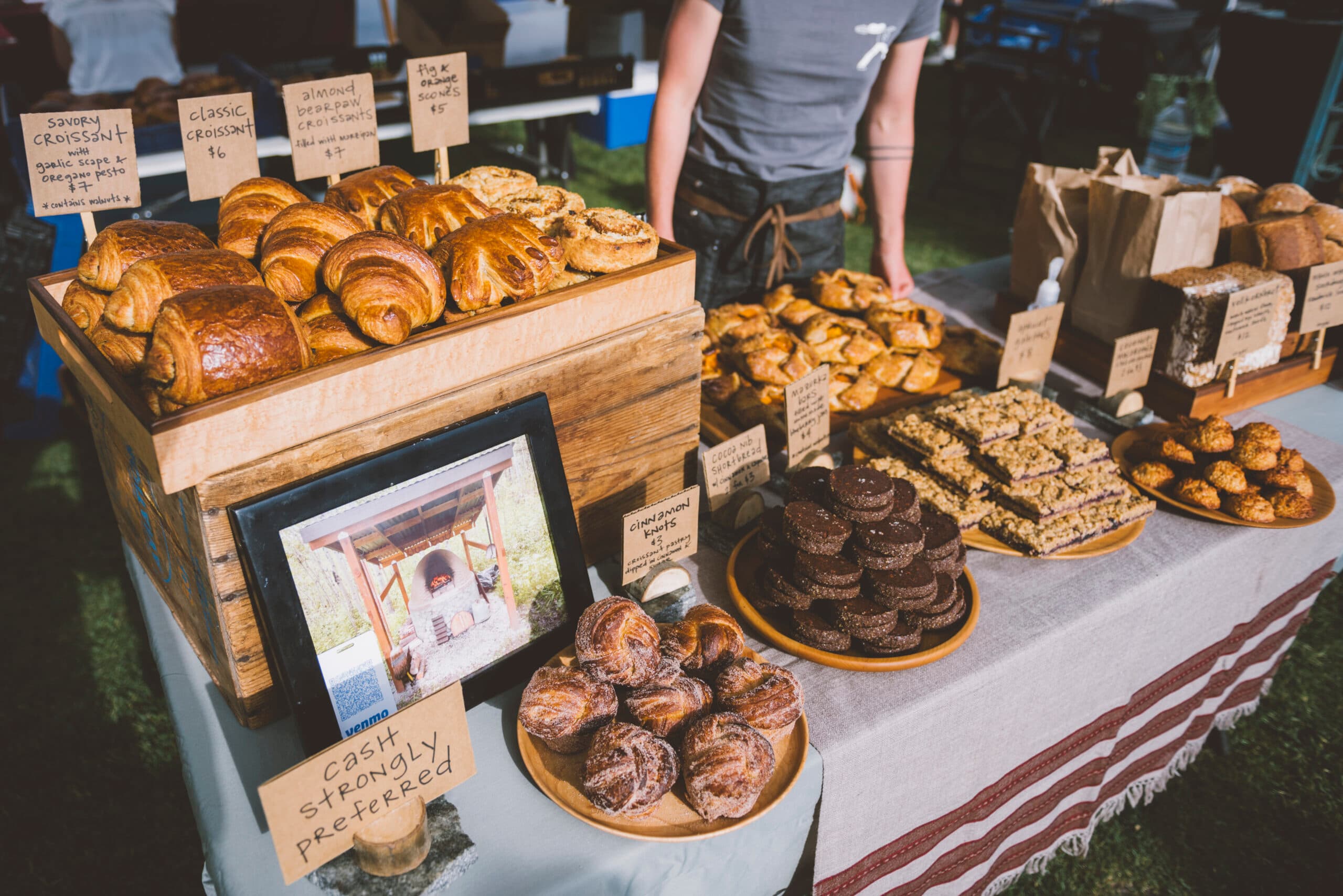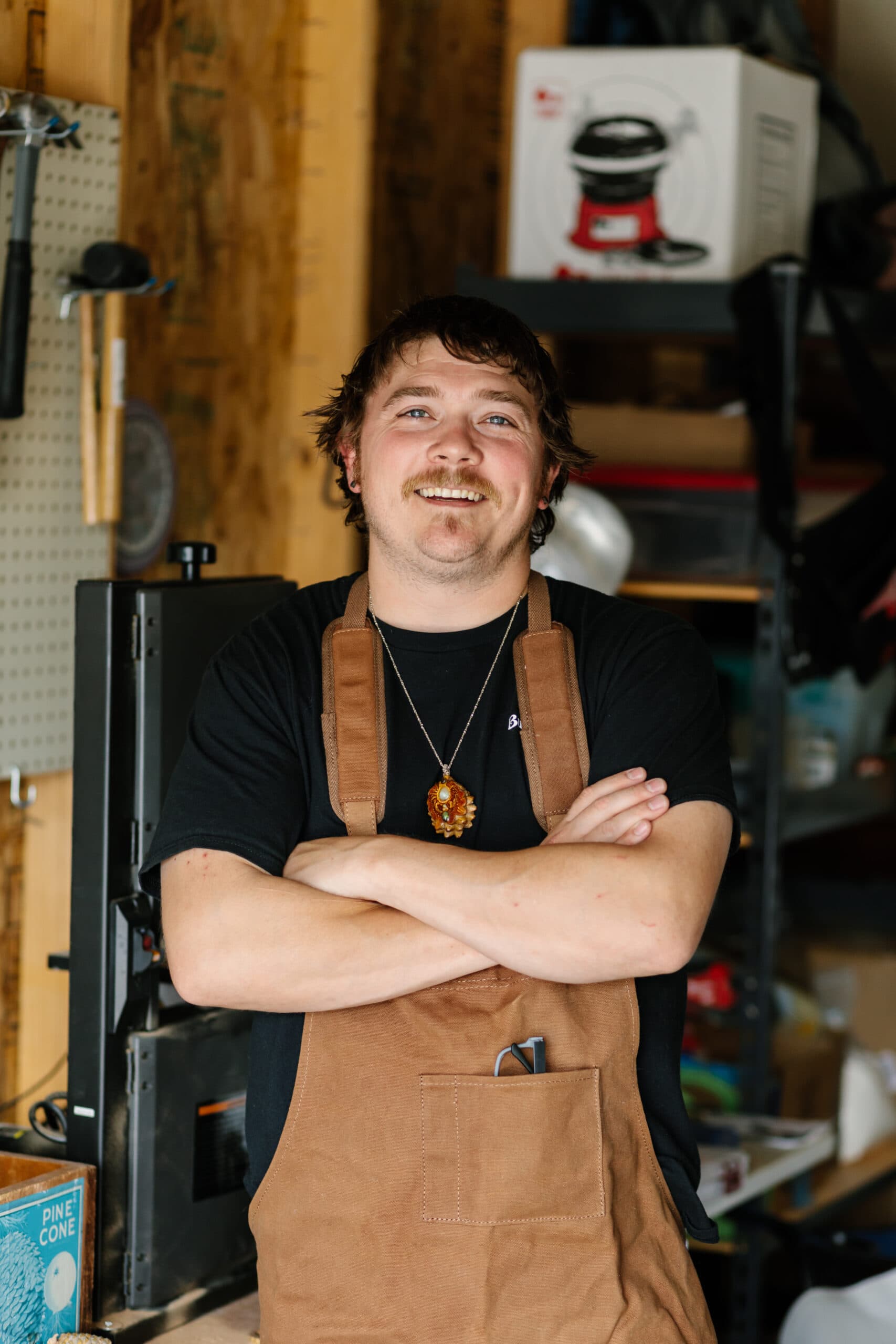Driggs Snowscapes
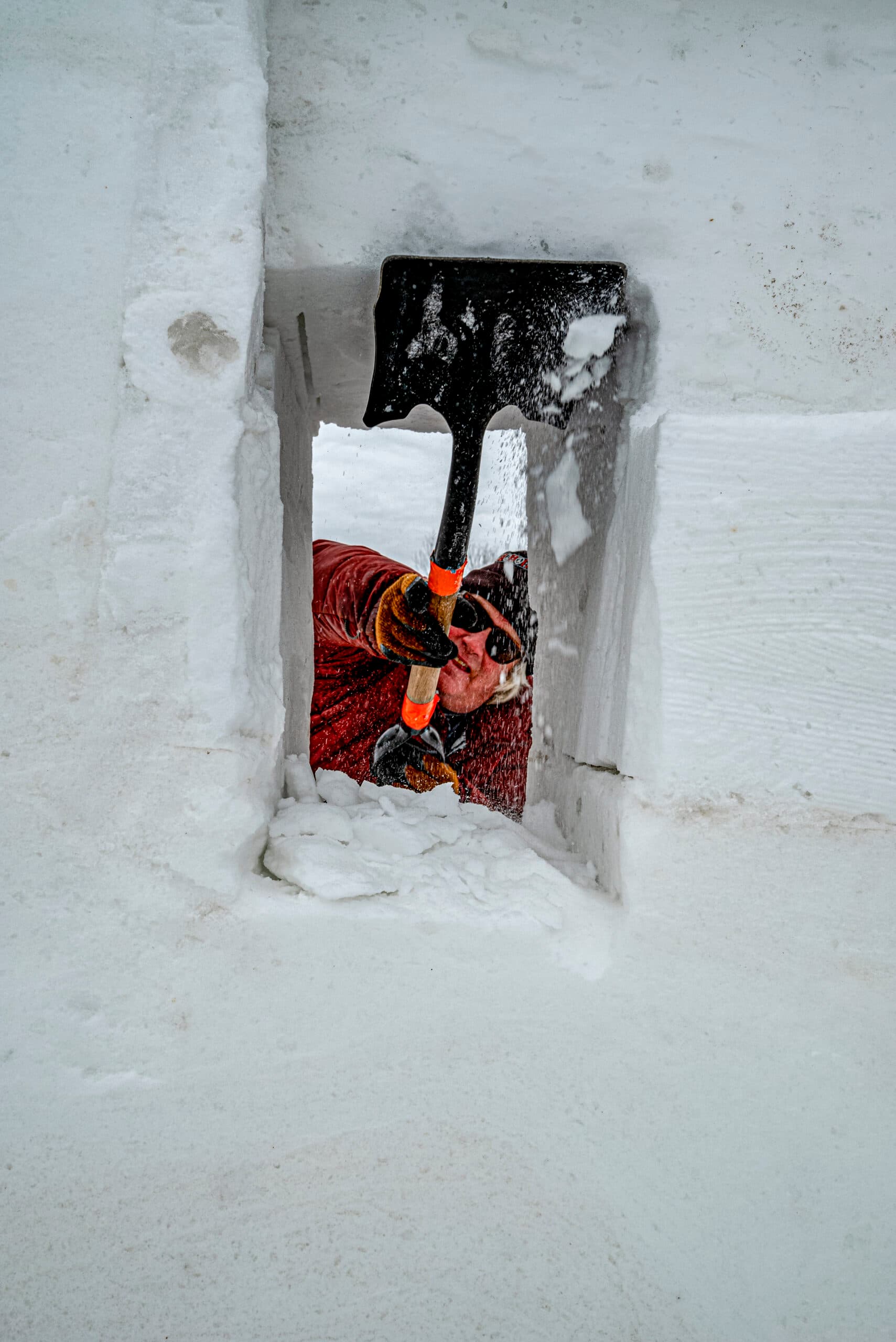
Local mushroom farmer, Tye Tilt has participated in Driggs Snowscapes since 2012. One of his favorite parts of the snowy artistic endeavor is seeing kids’ excitement as they take in the larger-than-life creations.
Tye Tilt says that when snow is perfect for sculpting, it has a texture like cream cheese and can be carved with just a finger. He would know.
As a Driggs Snowscapes: The Art of Sculpting Snow competitor since the event began in 2012, Tye is an expert at transforming fluffy flakes of snow into towering artistic masterpieces.
Every winter, sculptor teams descend on Driggs City Center Plaza to transform snow into art. Each team may include more than five members, but only five can work on the sculpture at any given time. The rules are simple: no power tools (with an exception for mixing snow and sharpening tools), no colorants, and keep the themes family-friendly with no politics or explicit nudity. Otherwise, how sculptors transform snow into art is up to the teams’ imaginations.
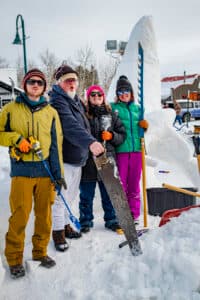
Anyone can stop by and chat with the sculptors as they work. Once the sculptures are complete, the public votes on favorites, and the frozen artwork remains in place until Mother Nature melts them away. This winter, the thirteenth annual event will take place from January 20 through January 25, 2025, including a Quick Sculpt Competition, Block Party, Snow Ball, and Awards Ceremony.
But the event doesn’t begin on the plaza in the winter. It starts in the fall—with visions and some modeling clay—as teams plan out their creations, typically using one inch of clay to represent one foot of their planned creation. By September or October, participants generally have already put their teams together and come up with a creative concept. “There’s quite a bit of work that goes into it ahead of time before we even have any snow,” Tye says.
Tye first became interested in snow sculpting during the valley’s inaugural competition. He was walking from Barrels and Bins to the Driggs Post Office when he spotted artists carving massive blocks of snow on the plaza, so he headed over to investigate. The local mushroom farmer quickly spotted an Alice in Wonderland-themed sculpture, which included a number of mushrooms, his speciality, carved out of snow. The works of art captivated him and he knew he wanted to participate.
Tye has run his gourmet mushroom farm, Mountain Valley Mushrooms, since the early 2000s, and he loves growing food for family, friends, and community members. “I’ve always loved all things fungal,” he says.
Chatting with the local artists who were carving the sculpture, Tye soon learned that one of the team’s members was out sick, and they had a spot for a substitute. Tye soon began helping, and he’s been involved with the competition every year since.
The process of actually sculpting involves “lots of grunt work,” Tye says. Large concrete forms are filled with pristine snow, which is allowed to harden before the forms are dismantled. Then the carving begins. Tye estimates it takes about one hundred and fifty to two hundred hours to pull it all together.
Tools range from simple spoons to lumberjack crosscut saws with a handle on either end, chisels, cable saws, and sandpaper. Tye has even made his own tools out of things he finds at thrift stores. “Almost anything can be a tool,” he says.
Teams must also have a way to reach the top of their blocks, so some form of ladder or step stool or scaffolding is generally required. In 2017 Tye and his team made a sixteen-foot-tall giraffe, which required some ingenuity. That year, the giraffe took the “trifecta” of first place, people’s choice, and kids’ choice awards.
Tye says the first day or two involves blocking out the snow and shaving it into rough shapes, followed by days of focusing on details, like giraffe horns, eyelashes, and leaves for that year’s creation. Finally, at the end, they work on adding textures that are easily washed out by the sun.
“For me, the greatest pleasure is watching a six-year-old kid come up and realize that you’ve carved a full-size elephant or giraffe or brought a whale to Driggs,” Tye says. “When they figure out that it’s made from snow and it’s something they can do themselves, I think it’s pretty special. And that smile, and their eyes get big, that’s what really appeals to me.”
Last year, Tye’s team, which included fellow Teton Valley residents Sloane Hartwell, William Kelly, River Osborn, Forest Edwards, and Claire Brandhorst, earned the runner-up award for the kids’ choice award for their creation, “Whalin’ Jennings,” focusing on the iconic humpback whale. The first place winner in 2024, which also won additional honors, was “Camp Robbers” by Team Wyoming from Laramie. The winning team described their snow sculpture as: “A couple left their Valentine picnic to take a stroll. Meanwhile, the gray jay and the chipmunk have brought their sweethearts to enjoy the unattended feast.”
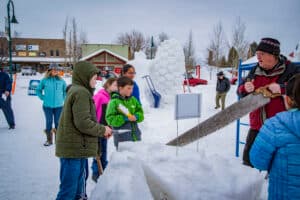
While people enjoy voting on the sculptures and appreciate watching them come together, sometimes they don’t last for long.
“One thing I really love about snow sculpting is it’s an ephemeral art,” Tye says. “This year, within three days they started looking terrible, because it was really warm and sunny. So, none of it lasts. Unless you take a picture, it’s gone, and that really appeals to me. It’s never going to be in a museum. It’s sort of one and done, and you do it just for the love of doing it. And all that snow will turn into water for fish and farmers and fungus.”
Tye Tilt points out that kids and adults alike don’t need to wait for an elaborate competition to carve some snow. He says to just try it. Simply put the type of snow you’d use to make snowballs in a round trash can, fill it in, and pack it down. When the snow is ready, flip the trash can over, and start carving.
“People think it needs to be a big production, and that’s not true,” Tye says. “If you have a trash can, a hand saw from your dad’s garage, a chisel from your toolbox, and a spoon, you can carve something really cool. The ideas are endless—your imagination is the limit, as far as I can tell.”

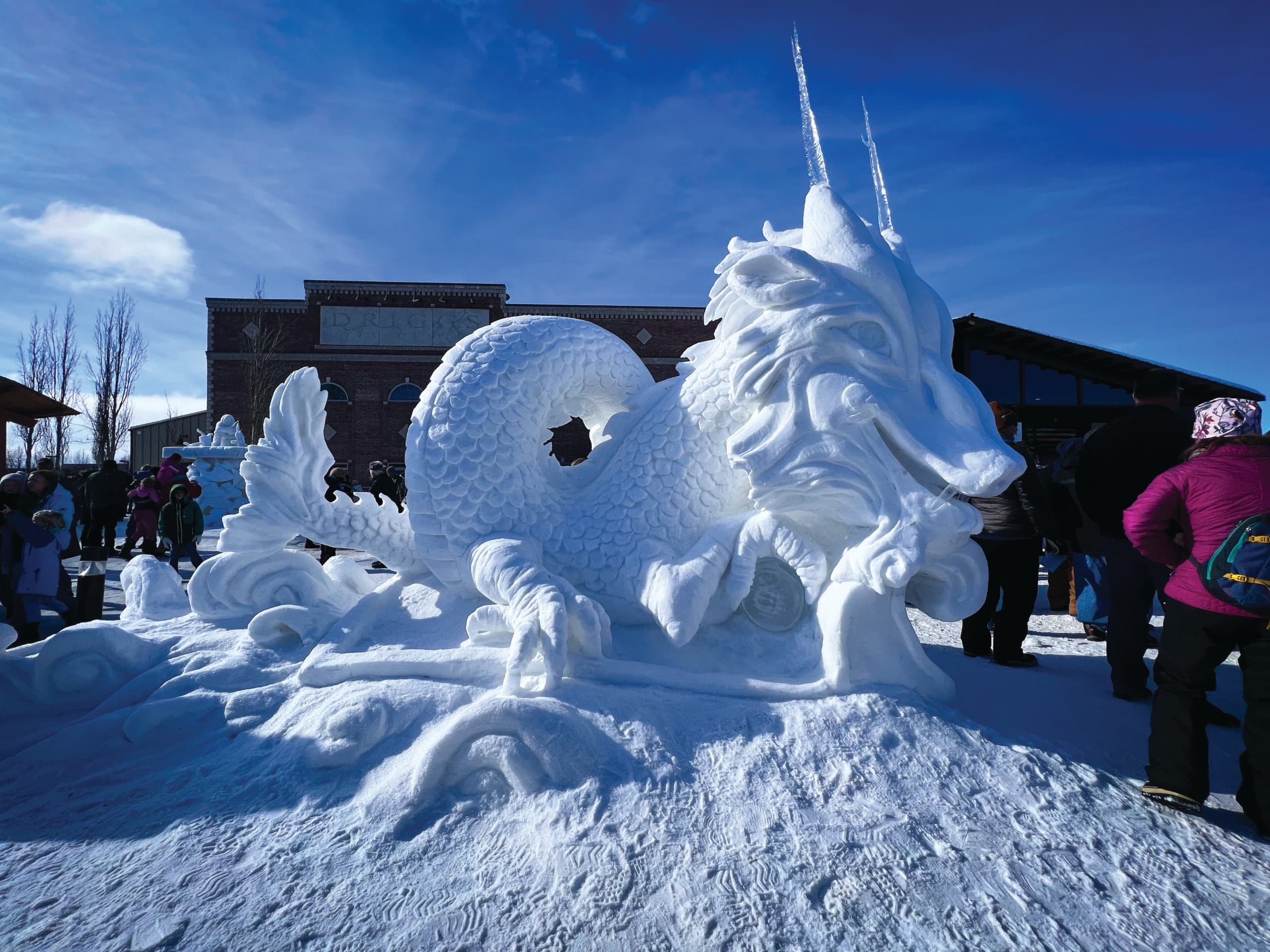
test run
snow
